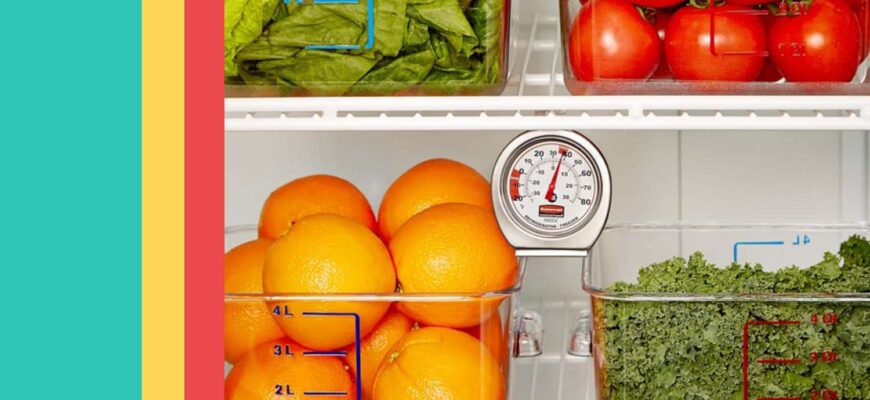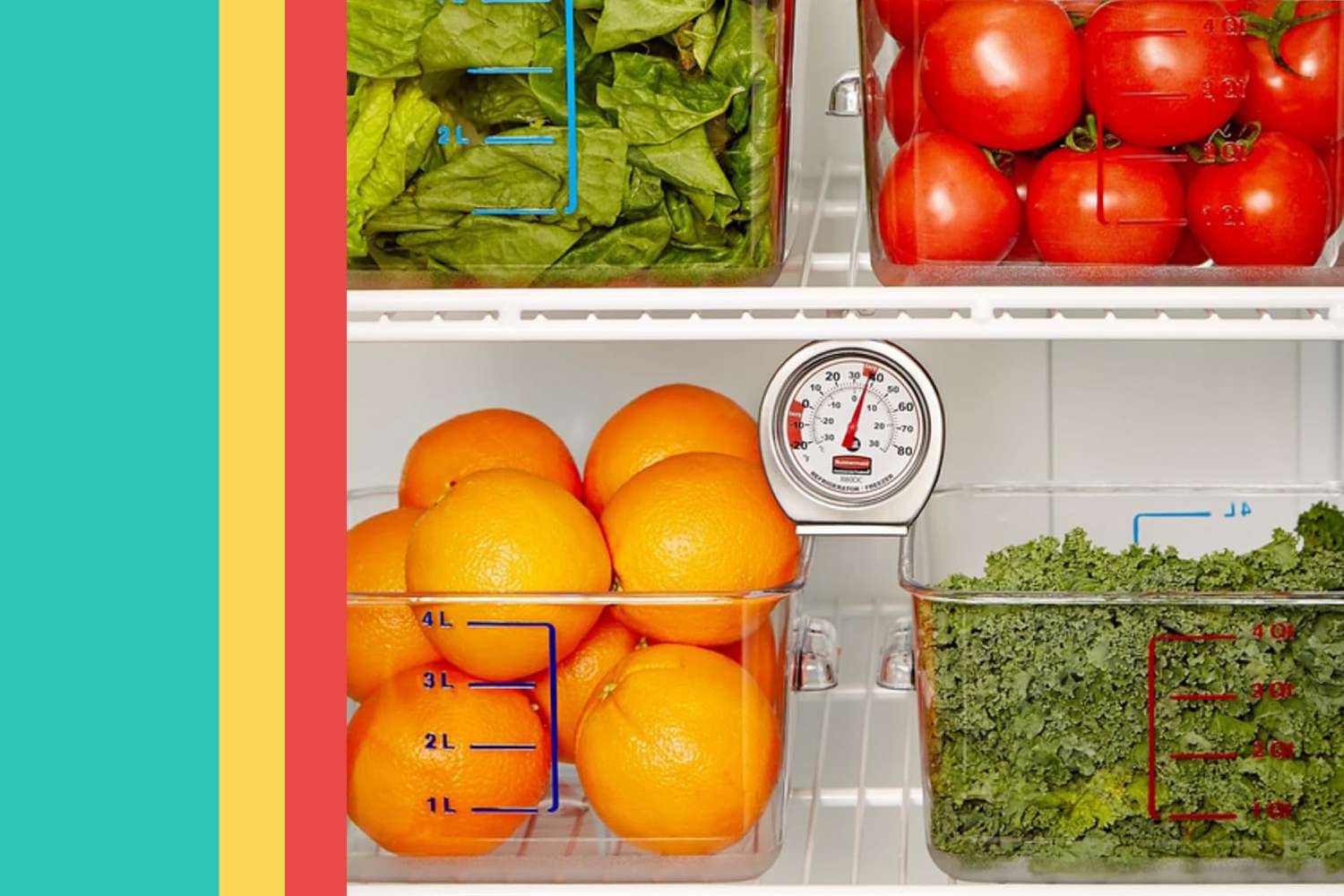
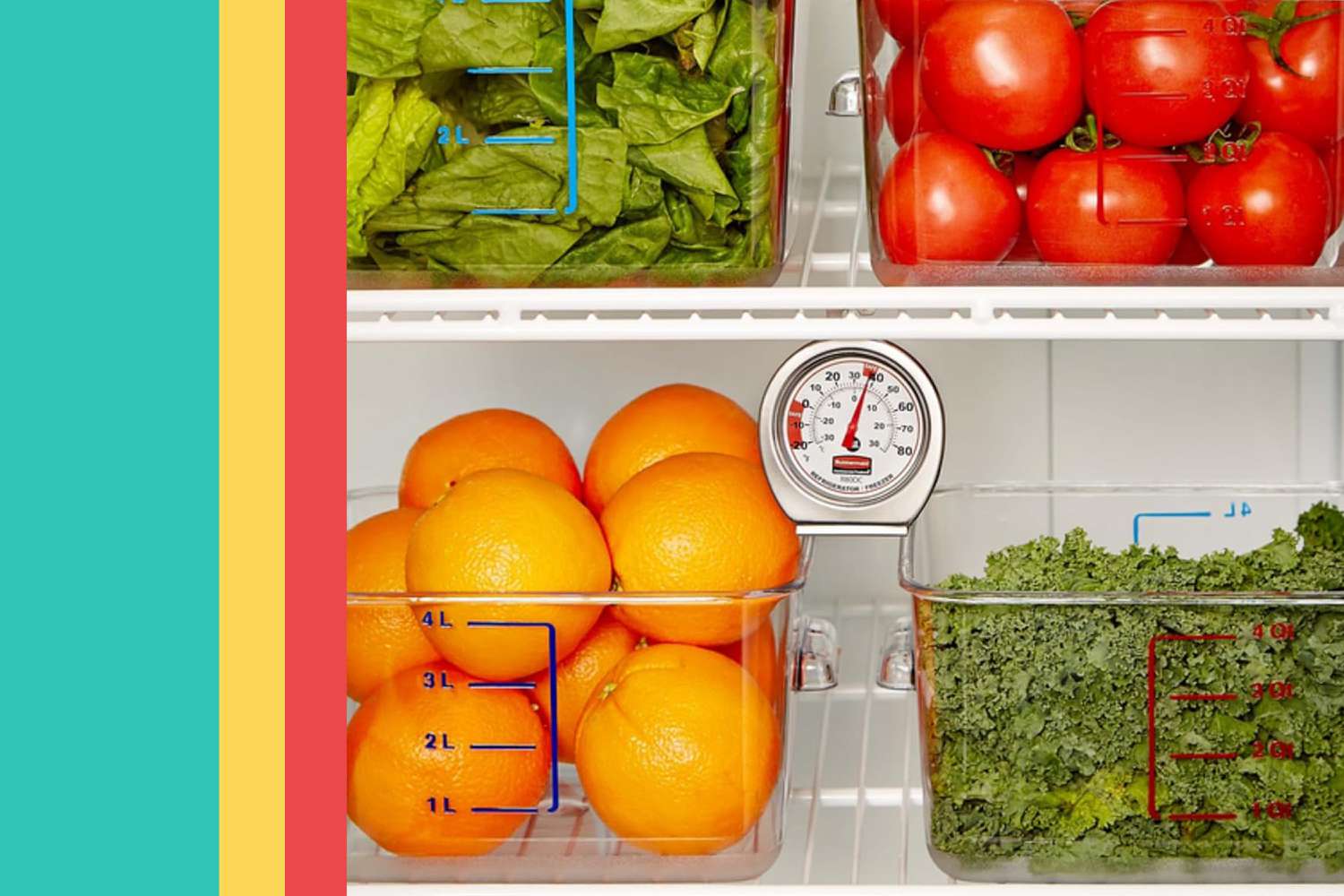
Credit:
AllRecipes / Amazon
Is your refrigerator running warmer than you think? According to a new study published in the scientific journal Food Microbiology, it may be. The study, which the Salmonella and Listeria Unit conducted at the French Agency for Food, Environmental, and Occupational Health and Safety, found that the temperatures of home refrigerators across 16 European countries were running at about 6.4 degrees Celsius (43.5 degrees Fahrenheit) on average. Based on recommendations from the Food and Drug Administration (FDA), the temperature of your refrigerator shouldn’t exceed 4 degrees Celsius (40 degrees Fahrenheit).
While some high-end household refrigerators include built-in temperature readouts, most do not—and even a few degrees can mean the difference between fresh and spoiled food. That’s why we suggest using a refrigerator thermometer to practice proper food safety at home.
Rubbermaid Refrigerator Thermometer
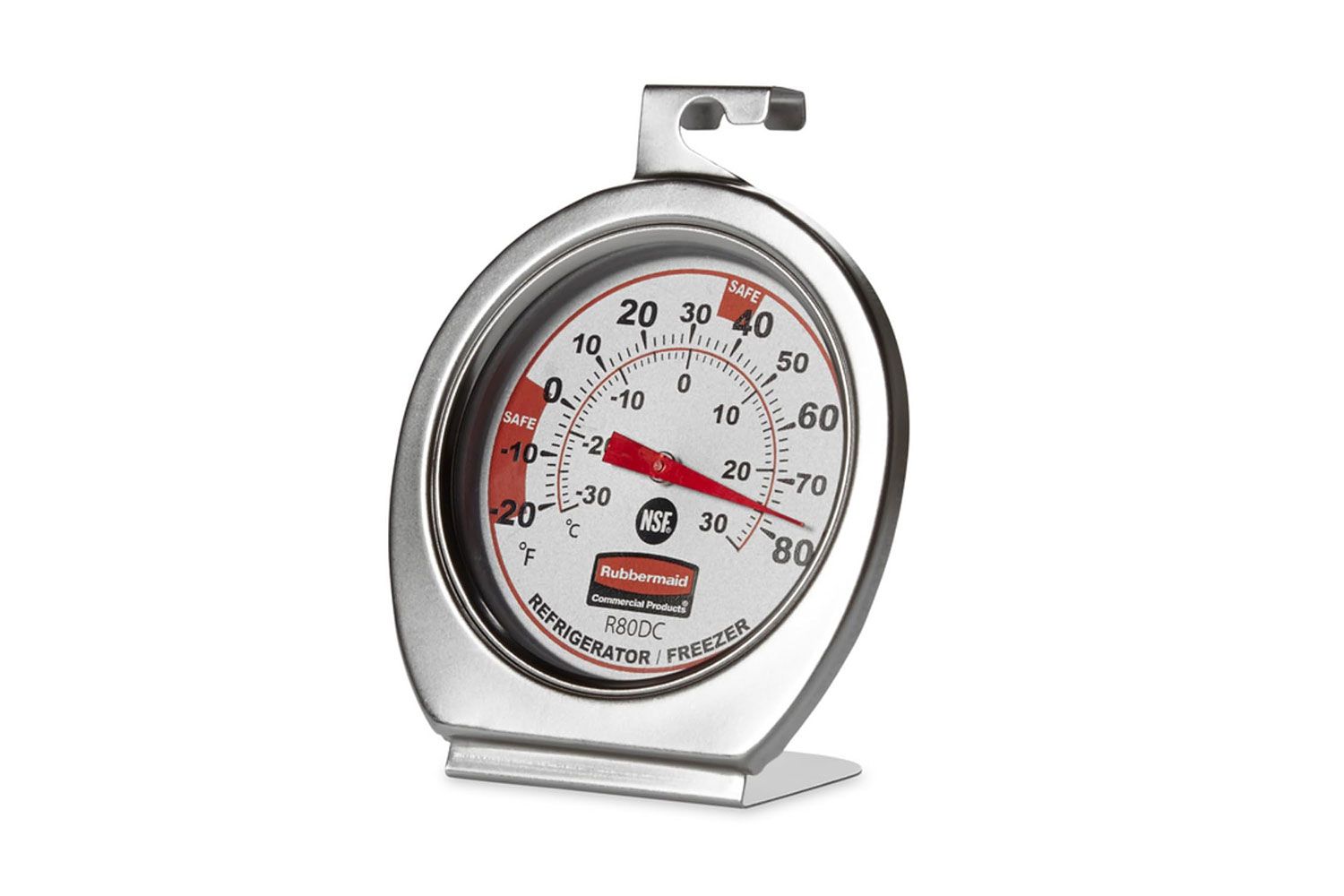
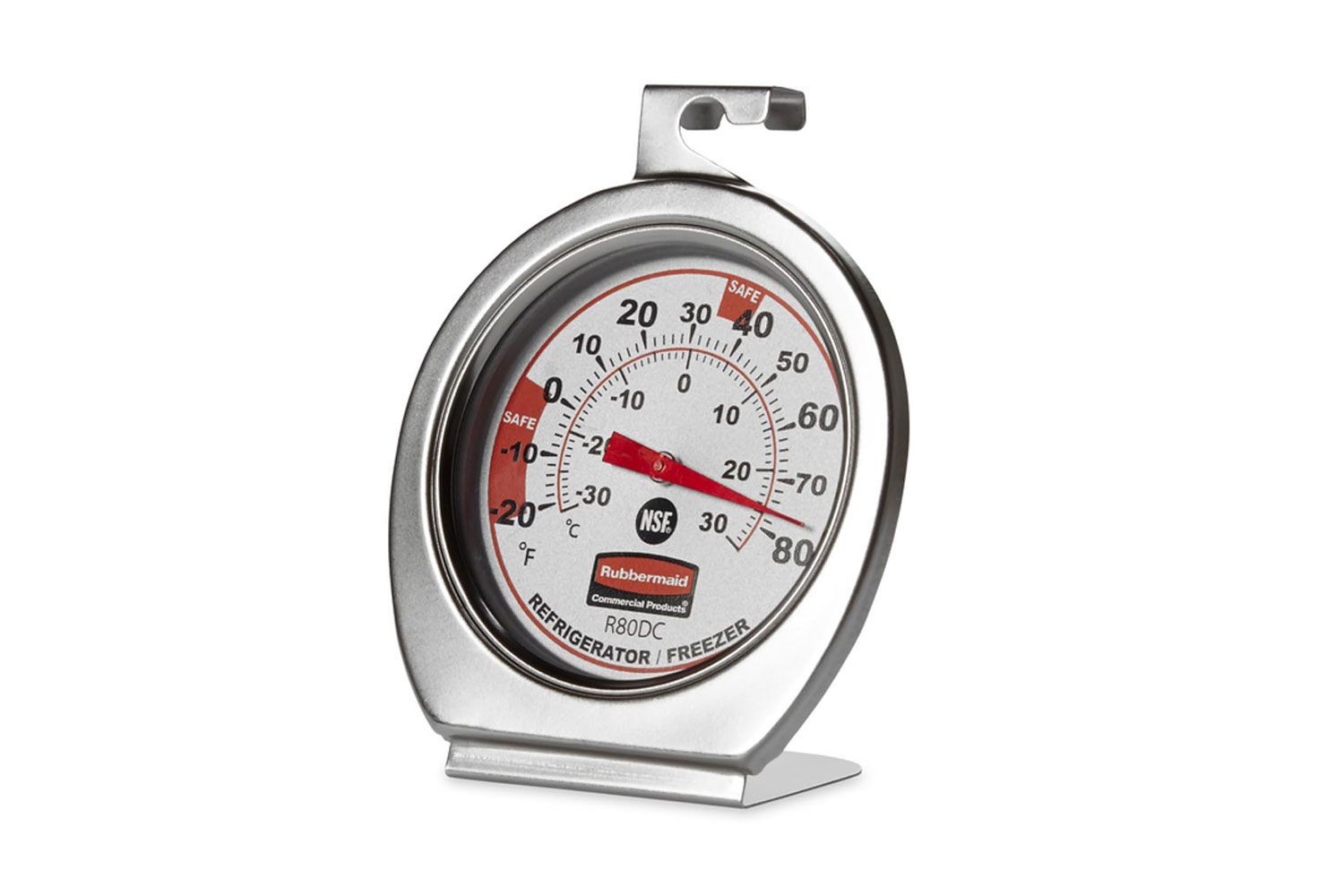
Amazon
$8 at Amazon
The best way to prevent poor food safety and monitor your refrigerator temperature is with a thermometer built to handle the cold. This $8 model from Rubbermaid is the cooler temperature version of our favorite tested oven thermometer, which we love for its easy-to-read display, durable construction, and reasonable price.
At 3.75 x 2.5 x 1.5 inches, the thermometer is small enough to fit easily within your refrigerator without getting in the way—with numbers that are large enough to see without squinting. It features a stainless steel body with a shatter-proof lens that’s completely analog, so you won’t have to worry about charging it or replacing any batteries.
One Amazon shopper used it to check the temperature of their parents’ aging refrigerator after noticing it didn’t feel cold enough. “[We] stuck it in the fridge and our suspicions were confirmed—refrigerator was too warm,” they said. “No wonder the milk kept spoiling quickly.” Another shopper checked their fridge’s temperature using an infrared thermometer for reference and found the Rubbermaid thermometer to be accurate as well as durable, reliable, and easy to use.
We recommend looking for an NSF-certified fridge thermometer that is approved for safe use with food and in kitchen environments. You’ll also want one with an extreme temperature range, like the Rubbermaid model, which reads between 20 degrees Fahrenheit and 80 degrees Fahrenheit. Even better, it has red “safe” markings for ideal refrigerator and freezer temperatures, so you can use it in traditional refrigerators, freezers, mini fridges, and coolers alike.
Of course, other factors can influence your refrigerator’s temperature, such as overpacking, opening the door too often, or keeping it open for extended periods. However, using a refrigerator thermometer is a great way to add some peace of mind to your kitchen. We found several other fridge thermometers to consider below if you prefer something with a digital display, an alarm, or even a large, waterproof construction.
More Refrigerator Thermometers for Food Safety
Taylor Large Dial Kitchen Refrigerator and Freezer Thermometer
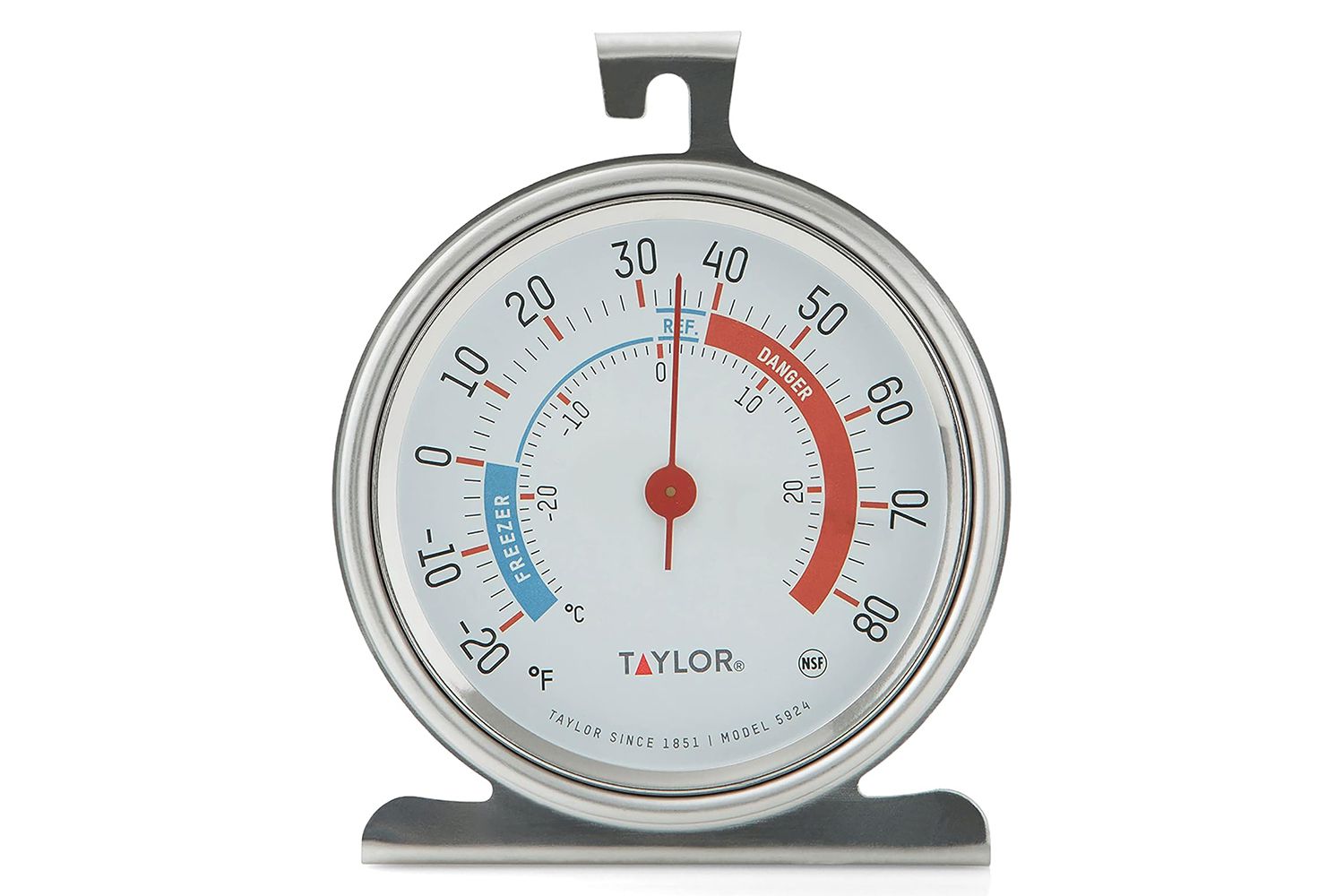
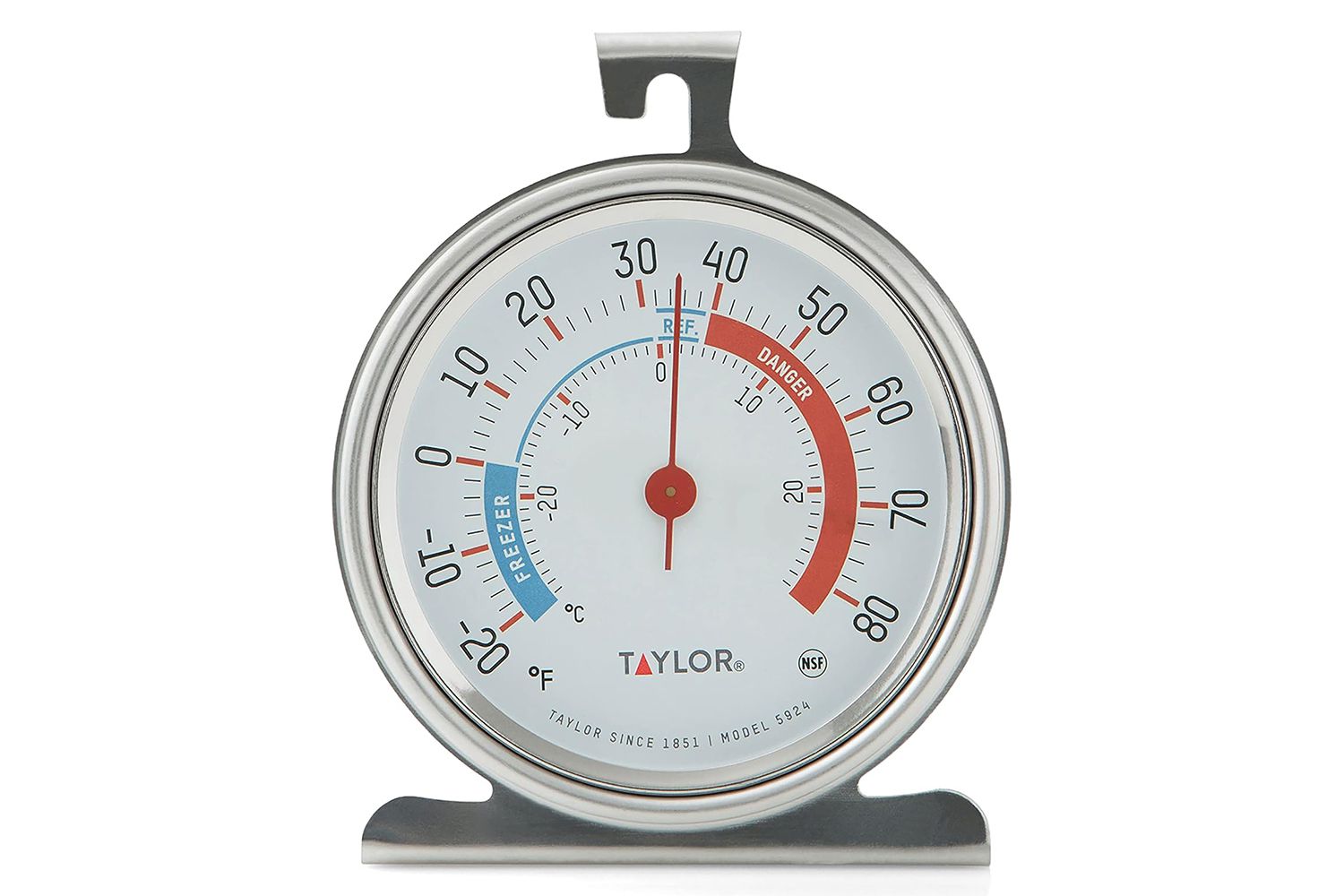
Amazon
$7 at Amazon
ThermoPro Digital Refrigerator Thermometer 2-Pack
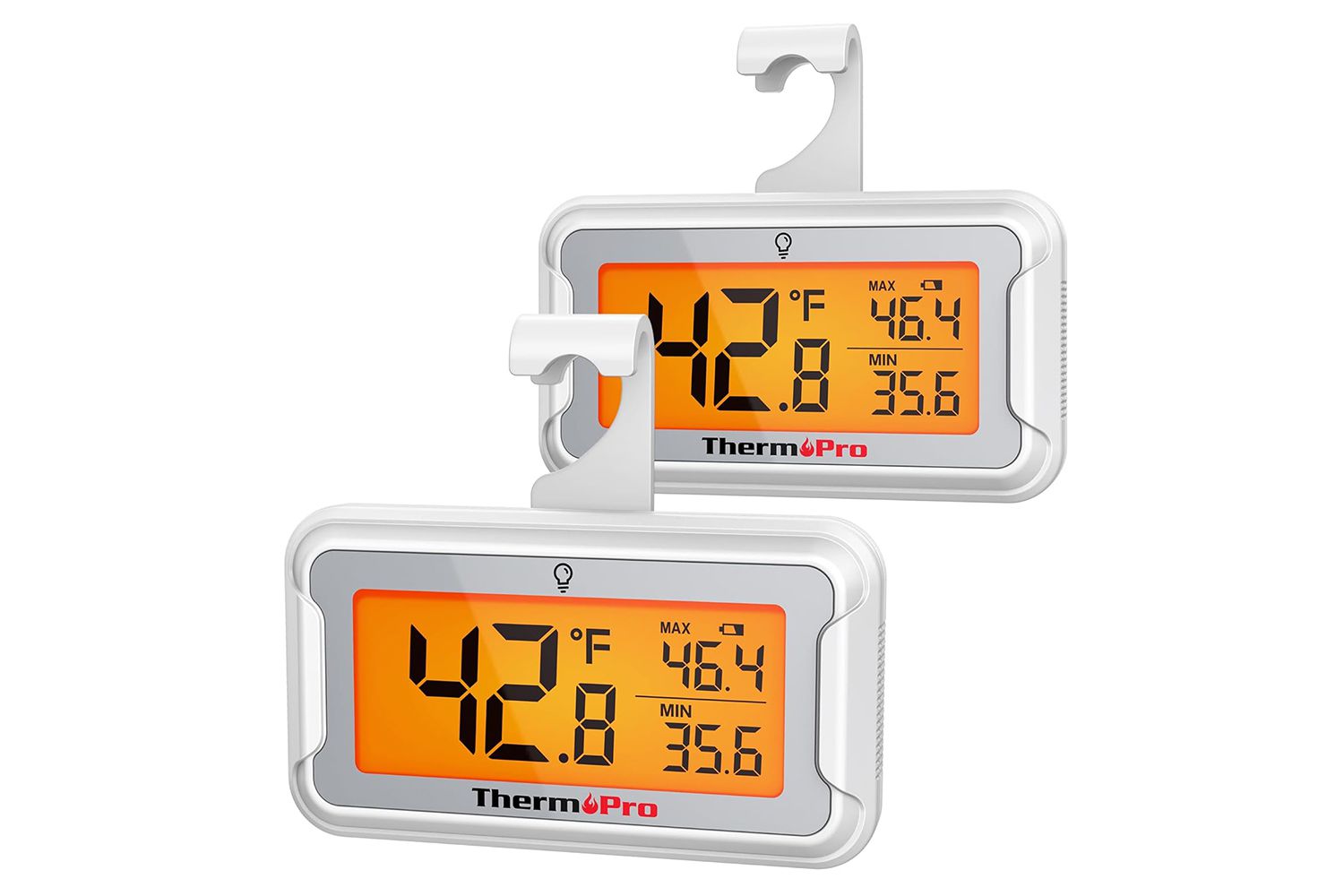
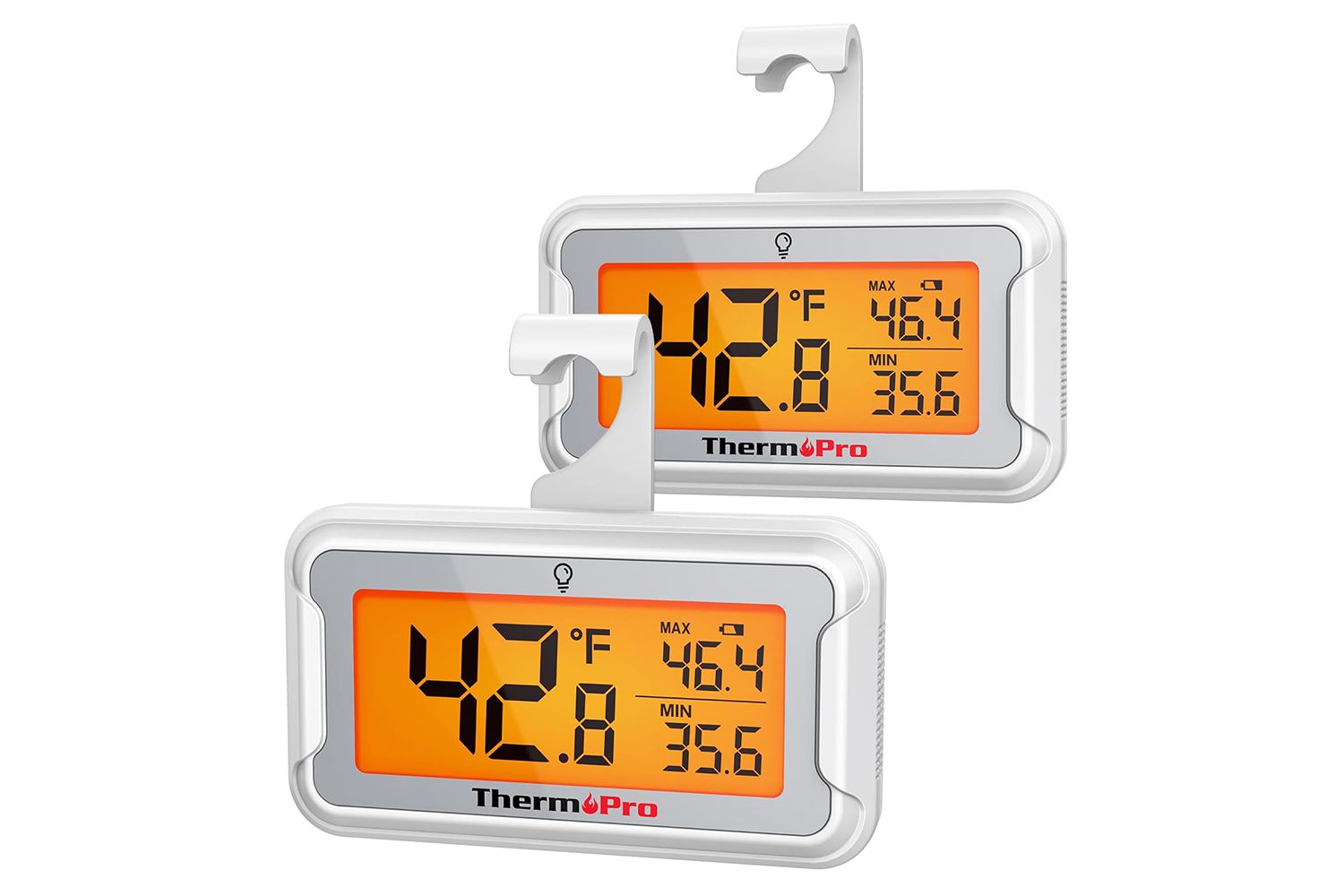
Amazon
$16 at Amazon
AcuRite Digital Wireless Fridge and Freezer Thermometer with Alarm
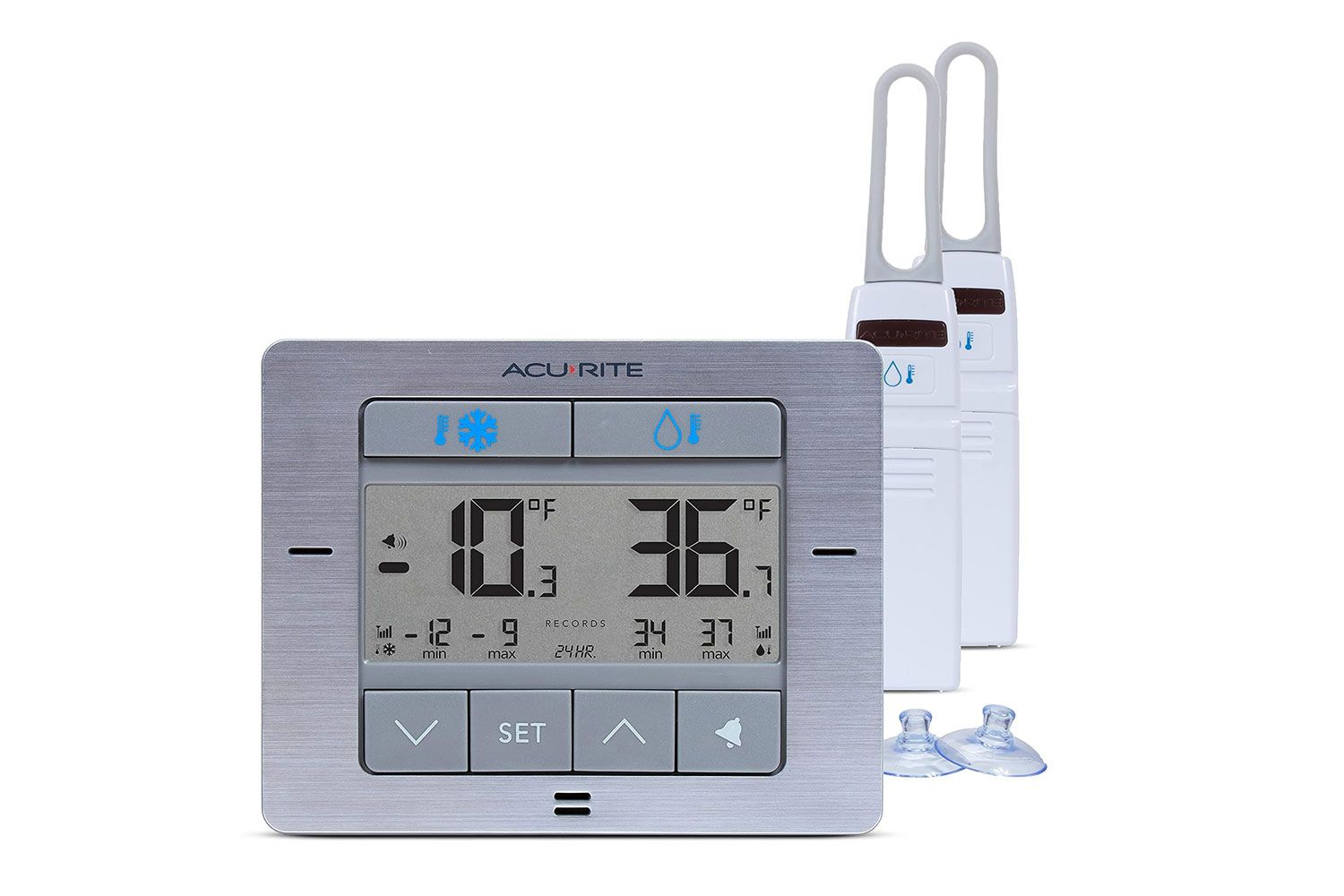
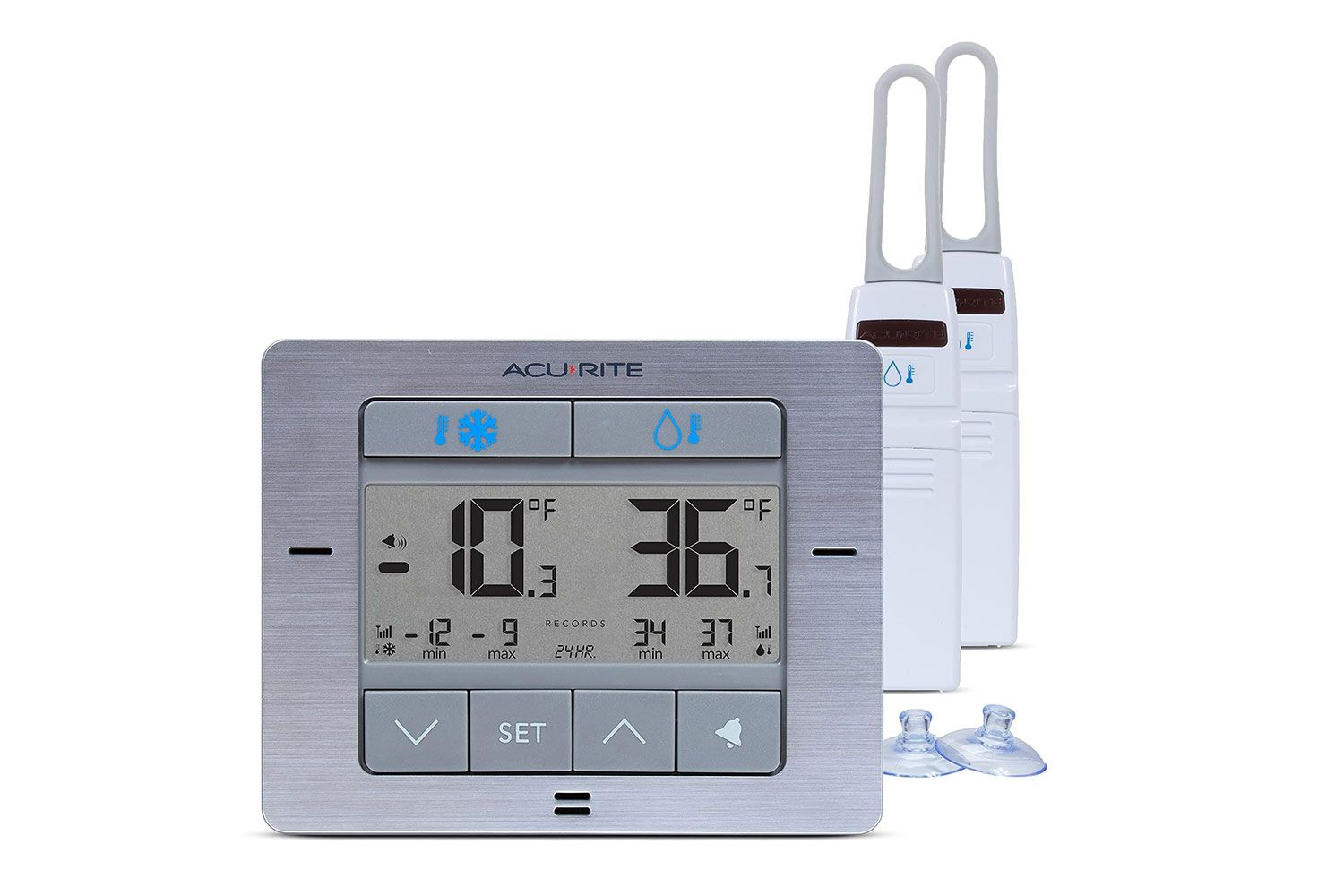
Amazon
$35 at Amazon
RIY Waterproof Refrigerator Thermometer with Max/Min Record Function
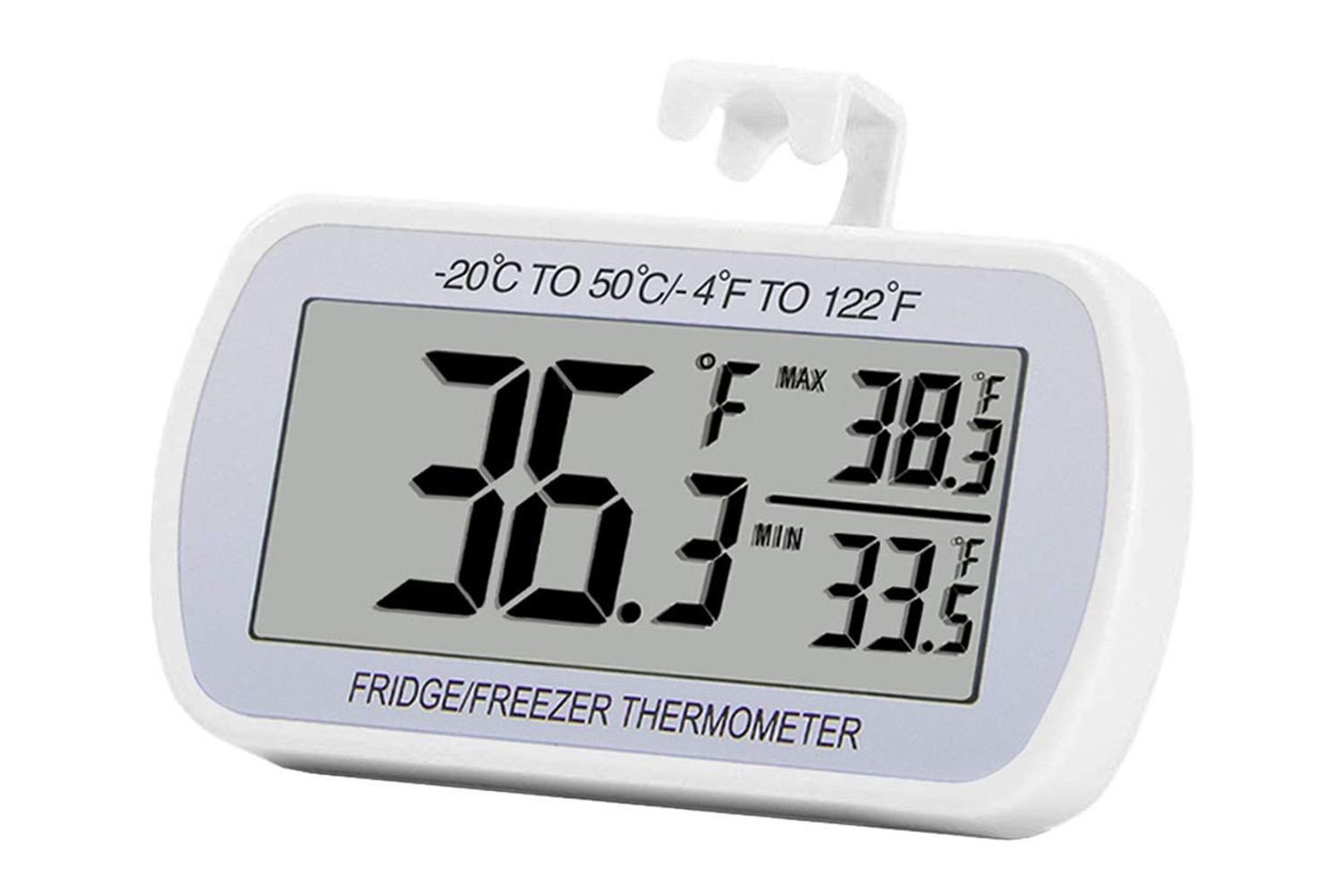
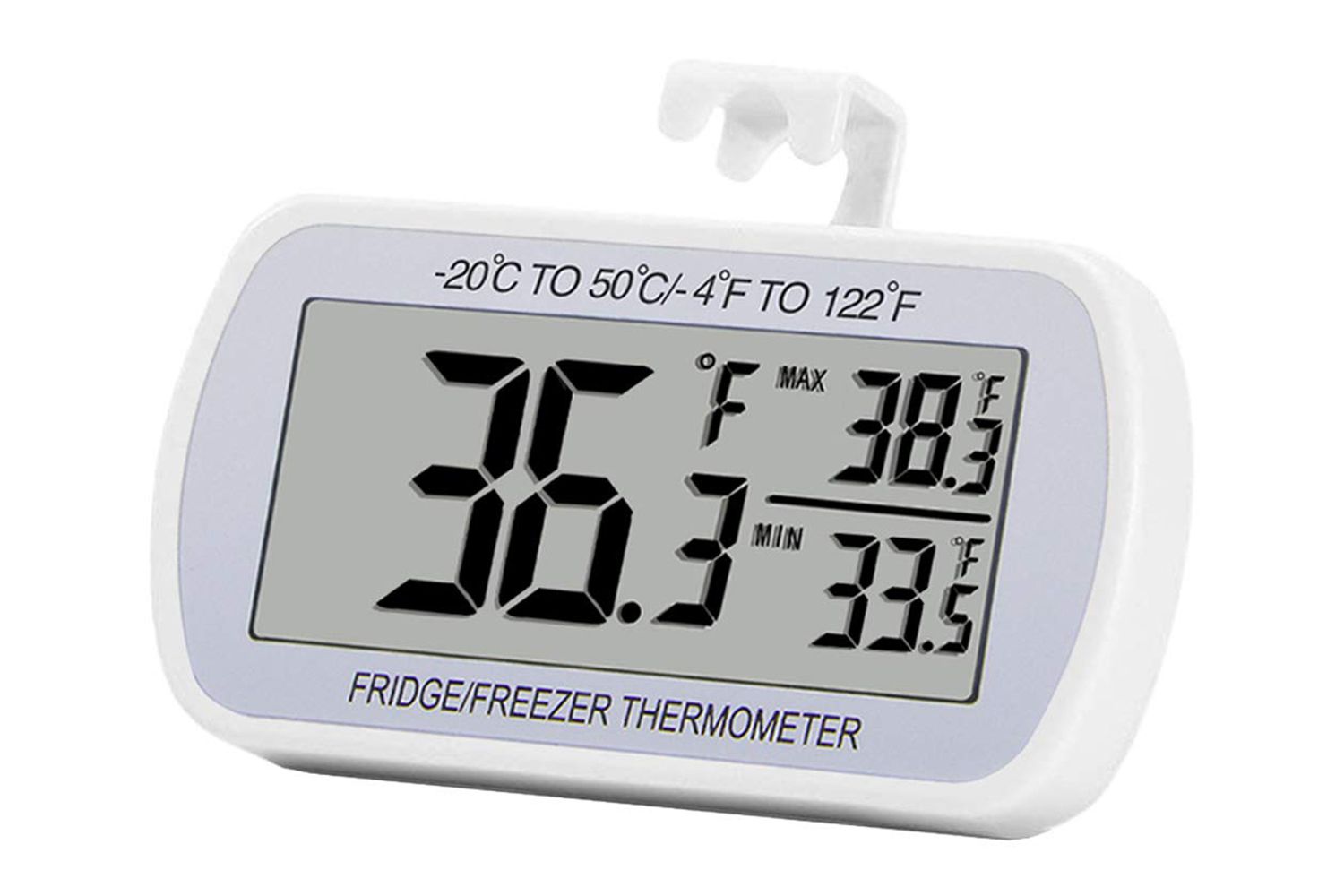
Amazon
$9 at Amazon
CDN Refrigerator and Freezer NSF Professional Thermometer
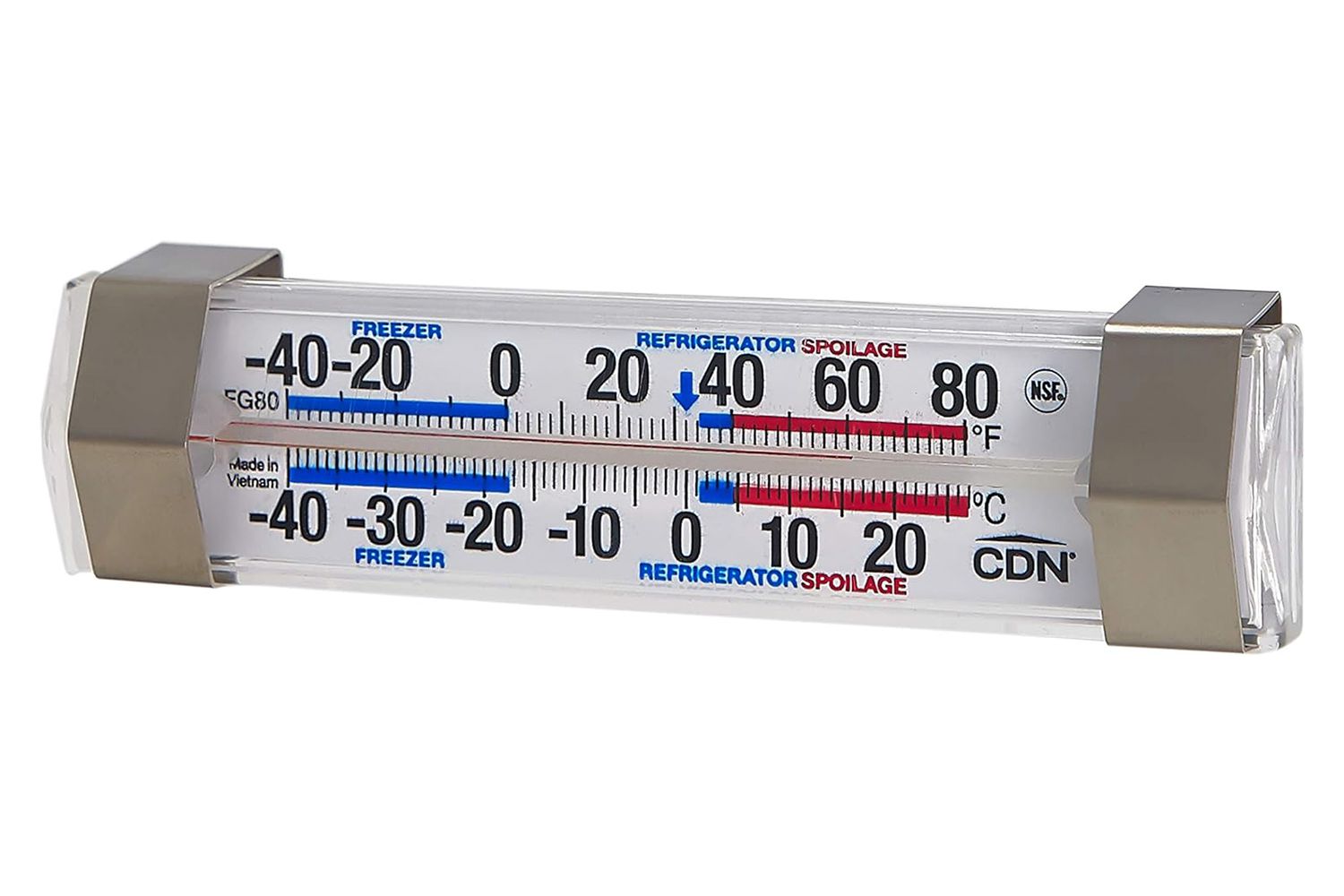
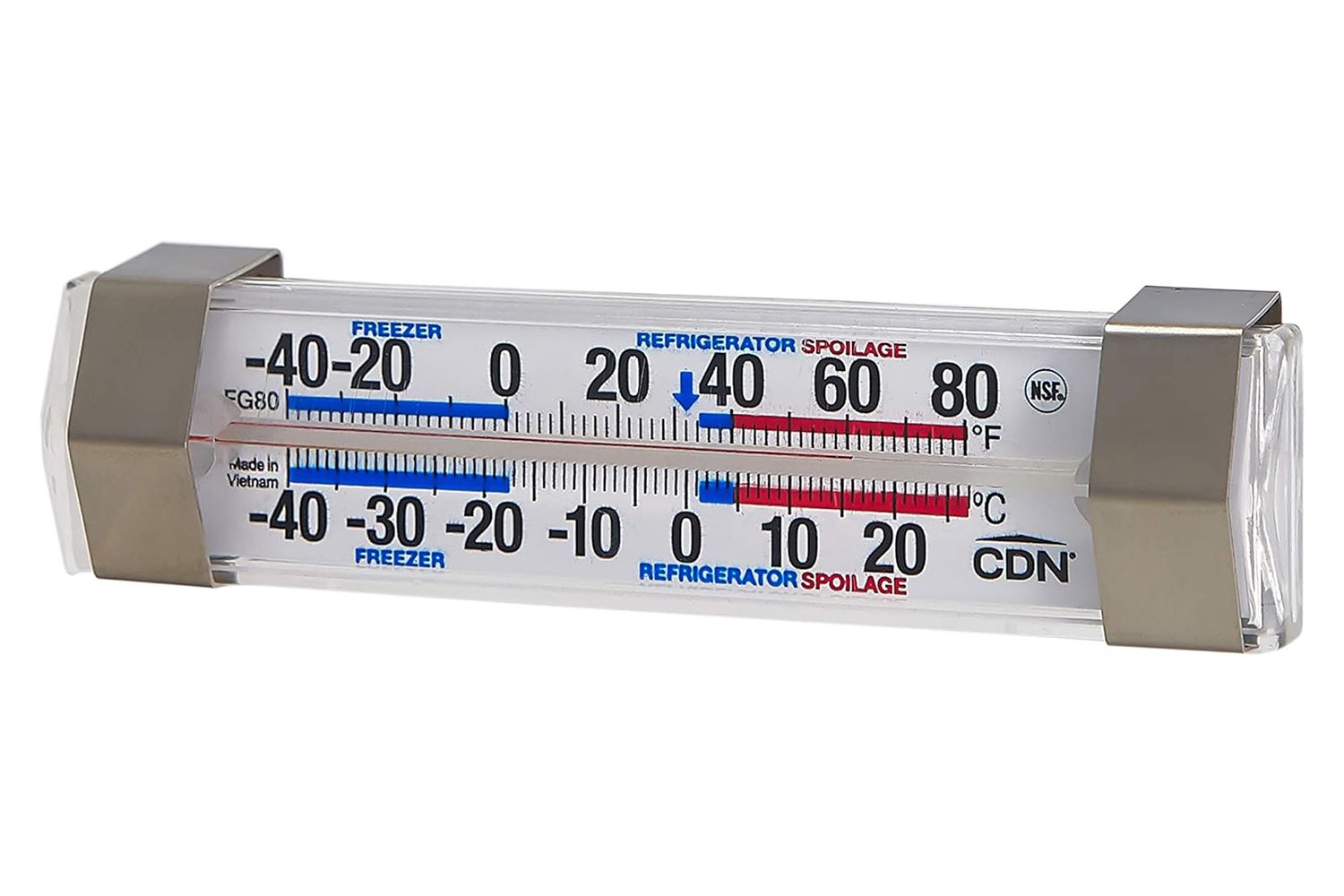
Amazon
$10 at Amazon
Explore more:
Was this page helpful?
Thanks for your feedback!
Tell us why!
Other
Submit
See More from Allrecipes
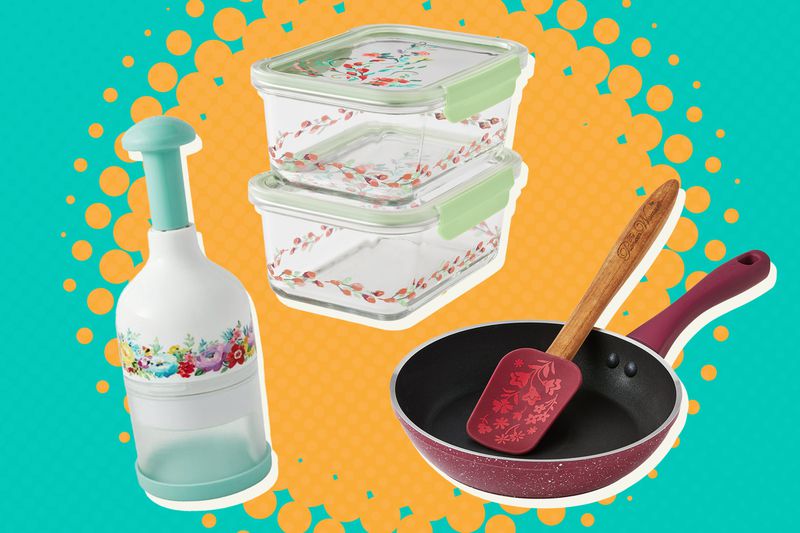
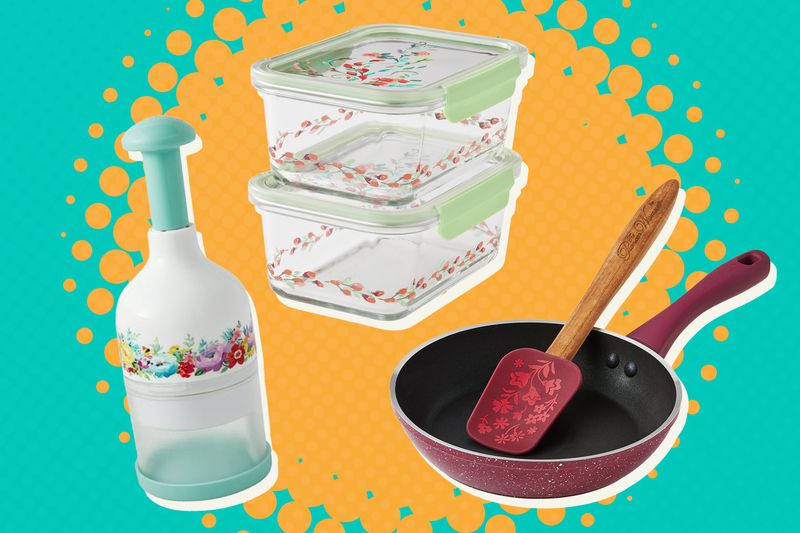
We’re Stunned These Walmart Pioneer Woman Kitchen Finds Are All Less Than $15


This Grandma-Approved Trend Adds Vintage Charm to Your Kitchen and Starts at $4


This Pyrex Glass Container Sale Made Us Do a Double-Take
